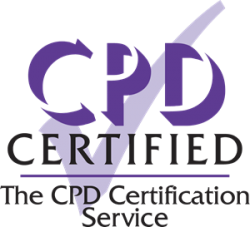
What is fashion merchandising?
When most people hear the term ‘fashion merchandiser’, they think that it only refers to the notion of selling apparel, since the word ‘merchandiser’ is defined as someone who sells their goods. However, fashion merchandising is more than just selling clothes to consumers. It is a multi-faceted role involving a strong sense of fashion design, business acumen, vendor management, strategic sourcing, garment costing and more.
It would be best to think about the role of a fashion merchandiser as more like an umbrella with a wide scope across several areas. The fashion merchandiser will be required to be a planner, an optimizer and a manager that works closely with different vendors.
What’s more, it’s a fashion merchandiser’s responsibility to understand the needs of the brand in terms of securing materials required for production. This is why a keen understanding of fashion trends is important since it affects the materials that the company requires.
At the same time, budgeting and purchasing decisions are of utmost importance. Sourcing at the right prices will allow the company to generate maximum profits by keeping costs minimal, something that an effective fashion merchandiser would be able to accomplish skillfully.
Apart from calculating costs, maximising sales is crucial as well. How does a brand truly create a great product? Would selling at full price work? The fashion merchandiser plays a key role in making critical decisions along with these areas, thereby pivoting the team in the right direction.
With that in mind, in this article, we will take a look at everything you’d like to know about this specialisation. We’ll look at a fashion merchandiser’s responsibilities, essential skills and how you can upgrade your knowledge with the right offline or online fashion merchandising courses if you’re keen.
Are you ready to enter the world of fashion merchandising? Let’s go!
Responsibilities of a fashion merchandiser
The fashion industry is evolving, and so are the fashion merchandiser’s responsibilities. Given the retail climate of discounts over the last few decades, today, the merchandiser plays a critical role in maximizing the profits they get out of their current and future procurements.
Besides having a strong understanding of how to assess the various materials, the merchandiser needs to have strategic analytical insights, management skills, understand global tariffs to ensure that costs are kept low, while garments sourced are of quality.
Since sourcing for the wrong types or insufficient quantities of material would inevitably put production to a screeching halt, this role carries a heavy responsibility.
Have we met targets? How is the marketing department performing? Is the styling team able to make the product look amazing? These are some of the daily issues that a fashion merchandiser would have to tackle. This is why a day in the life of a fashion merchandiser is never boring, despite the heavy responsibilities.
Understanding the costing of garments and fabrics

As a fashion merchandiser procures different garments and fabrics based on the brand’s needs, having a thorough understanding of garment and fabric costs is absolutely necessary for the role. There are many factors affecting the costs of fabrics and garments. This is why understanding ‘Incoterms’, such as the difference between Freight on Board (FOB) and retail prices, are simply essential for today’s global landscape. A lack of comprehension would be disastrous, leading to miscommunications, inaccurate costing and a reduced profit margin.
With garment costing, you’ll have to familiarise yourself with areas such as the costs of trims and accessories while also understanding the price of apparels. Fabric costing, on the other hand, looks at the importance of pricing, fabric weight expression, cost calculations and more.
Purchasing and managing merchandise
Another crucial responsibility that comes with fashion merchandising is the purchasing and managing of materials. This may also mean that you are responsible for distributing the products across different factories or stores depending on their needs.
Aside from that, the fashion merchandiser should optimize the budget allocation to fit the stock distribution to stores. Above all, you also have the responsibility of collecting data through various qualitative and quantitative tools. This should help you examine past products concerning future demand and distribution.
Production analysis and trend forecasting
In today’s digital economy, there is a constant change in global fashion trends that shifts demand for different types of clothing. This results in a quicker turnaround for different raw materials and textiles to meet shifting fashion trends.
One of the ways that a fashion merchandiser contributes to a company effectively would be to assess the risks associated with the garment product life-cycle. This will help to prevent production halts due to insufficient or poorly maintained garments. On top of that, a fashion merchandiser should possess analytical skills to accurately track production levels to ensure minimal downtime.
At the same time, analysing production levels will help find solutions for consumers based on curated product insights. Ultimately, the merchandiser uses the data to make estimates on sales and finalize their stocking decisions by analysing the fashion brand’s clientele buying patterns.
Building and maintaining relationships
A fashion merchandiser will constantly have to source, seek, liaise with vendors, suppliers and customers. Naturally, on top of keeping stock and tracking production, it will be the responsibility of the fashion merchandiser to negotiate and maintain a good relationship with the company’s suppliers. That will ensure a fair price and minimise the chances of a future supply crunch.
In fact, one of the indispensable skills you will learn in a superb fashion merchandising course is how to follow up, build and maintain a good relationship with suppliers.
A crucial function in every fashion brand
Behind every fashion brand is a tale to tell. Each brand has its unique aspects, whether it’s setting the latest trends, evoking a sense of awe, signalling prestige or perhaps having products that are priced economically.
In the world of fashion, this role is heavily relied on by the fashion merchandiser, since the other departments depend on the timely sourcing of supplies and materials. One of the very first steps in each new collection involves first getting the right materials.
Promotions and marketing
Marketing and promotion are crucial elements to taking your brand to the next level, and thankfully, it’s one of the fundamental lessons of fashion merchandising. This means that a deep understanding of local customer demographics are needed to design promotional campaigns that will make customers bite.
More importantly, a fashion merchandiser develops promotional content, marketing campaigns, and sales strategies to positively impact the business.
The role may involve working with visual merchandisers to establish a suitable storefront design that maximizes the interior layout that will attract the right customers. On top of that, ensuring that the product looks good, down to each minute detail, is crucially vital to ensure the success of any marketing campaign.
Not only will you have to handle the storefront, in today’s internet age, ensuring that the e-commerce platform is able to work is critical, especially in the competitive landscape of online fashion.
How can one become a fashion merchandiser?

There are several ways to become a fashion merchandiser. Inarguably, you’ll need to first understand the fundamentals. There are several ways to do so, including but not limited to:
Obtaining a degree or diploma
A degree or diploma in fashion merchandising will typically take 3 to 4 years to complete. Once you’ve obtained your certificate, you can start applying for a relevant role. During this period, students learn about the fashion industry’s overview and merchandising principles. A good foundation to build theoretical understanding. Practical skills, on the other hand, may be harder to develop with this option since the hands-on classes done in school may differ from current industry practices.
Internships
Most students taking tertiary education are exposed to an internship program. This program places the students in a work environment where they learn and have hands-on experience. Through internships, students get to enhance their network in the fashion merchandising industry and sometimes secure a job in the process. However, learning may be limited depending on the firm that one interns in.
On the job training
An option to consider, for those currently working in a fashion brand that allows mobility across departments. If you are able to transfer to the fashion merchandising department, you would have the opportunity to learn about this role while on the job. The challenge here is that not all fashion firms allow such an opportunity, not forgetting that you have to be already employed by one.
Recognised online fashion merchandising courses
Are you a fashion industry professional who does not want to take another degree or diploma but is seeking to upskill? Or perhaps you are a business owner who would like to elevate your brand to the next level.
A well-designed online fashion merchandising course carries many modern advantages. It allows you to learn at your own pace, save time travelling and pursue a new field of knowledge despite having a full-time career or business to manage. A good online fashion course is perhaps the best alternative if you are in this category.
How do we know if a fashion course is worth the time and money?
There are several ways to do so. Apart from assessing the institute’s reputation, check if they are endorsed by other institutes or organisations. One way to verify this would be to check if the course is CPD certified.

What does CPD stand for?
CPD stands for ‘Continuing Professional Development. Established in 1996, the CPD certification service assesses educational programs impartially to determine their value in developing one’s professional skills. This means that courses that are CPD certified are of higher quality and such courses impart knowledge that allows one to further enhance their skills.
More importantly, a good course also teaches students to learn how to apply their skills in real-life situations. Besides being equipped with the proper knowledge, having the ability to communicate with the instructor after the course is over is invaluable.
What does the CPD certification signify?
Courses that are certified under the CPD framework go through a thorough assessment to ascertain that these courses deliver value. As the CPD focuses on professional development, its accreditation also signifies that the course is designed for a professional in their respective field.
This implies that any individual with A CPD accredited course has demonstrated a degree of knowledge in the specific specialisation that they are certified in. In other words, CPD certified courses are not simply theory-based courses void of real-world context. In fact, CPD courses are the complete opposite of traditional textbook-based academic lectures. Instead, they are designed to train professionals to be ready to handle a full-time role in the industry.
At Fashive, our courses are CPD certified. We do offer the opportunity for students to communicate with the instructor should they have further questions, bridging the gap between a practising industry professional and the student.
Check out the link below to view all of our CPD certified courses:
https://thecpdregister.com/view/fashion-learning-hive-pte-ltd-778432
Are you interested to learn more about fashion merchandising?
The multitude of scopes within this role is exciting indeed. To enhance your apparel sourcing, fashion marketing and production tracking capabilities, consider taking up a fashion merchandising course or going for on the job training.
If you don’t have the time but want to understand more about fabric costing, garment costing, garment life-cycle management all the way through to sourcing and vendor management, a CPD recognised online fashion merchandising course may be the best option for you.
Whether you want to learn about the fundamentals or learn everything there is to know about fashion merchandising, having the right knowledge would certainly help.
Related Courses
Fabric Costing
- 8 hours
- Intermediate
- English
Garment Product Life-Cycle Management
- 20 hours
- Intermediate
- English
Strategic Sourcing and Vendor Management
- 16 hours
- Advanced
- English



